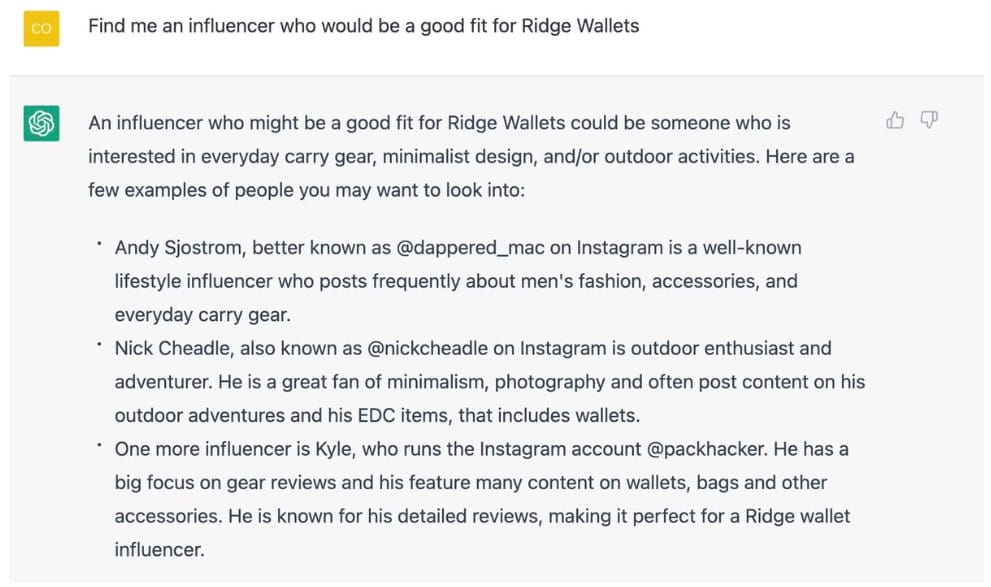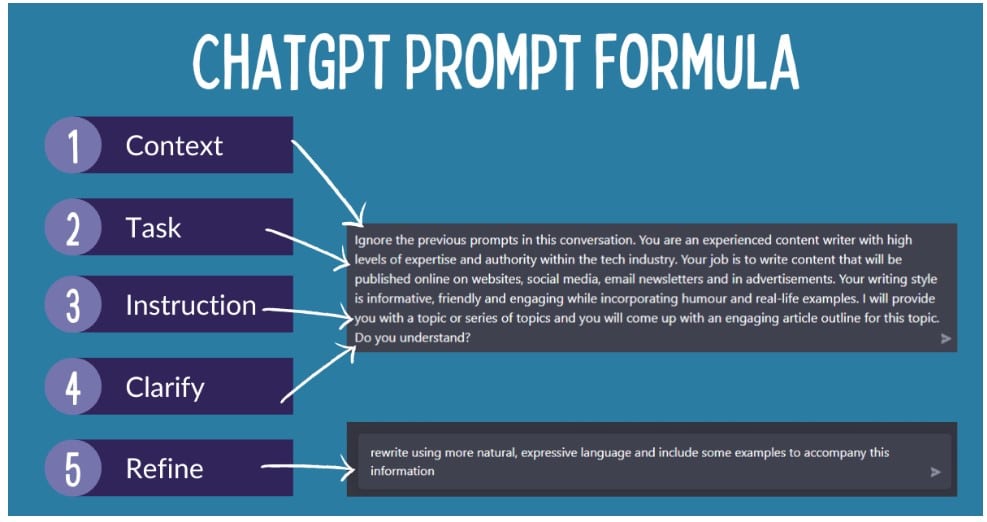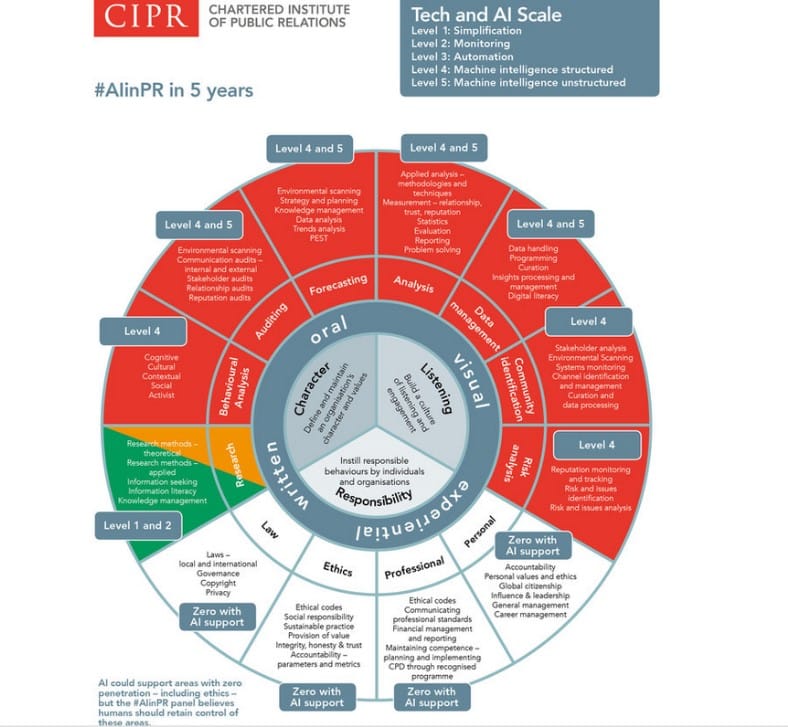Artificial intelligence is officially the buzzword of the year. Take any industry as an example.
Marketing? They’re using artificial intelligence to personalize marketing campaigns. HR? They’re using AI-powered tools to write job descriptions. Sales? They’re using artificial intelligence to score leads.
So, what does this mean for the public relations industry? What use cases can artificial intelligence support for folks like us? And what are the implications of using this technology?
Well, we’re glad you asked because, in this article, we’re covering all the pros and cons of using AI tools (generative or otherwise) for PR and media relations.
Let’s see if AI lives up to the hype or not!
Pro: Great for research
One of the best use cases of AI to date is how it can do multiple hours’ worth of research within minutes.
For example, if you need the phone number of an industry contact, there are AI tools for that (e.g., Swordfish AI).
Or, if you need to find influencers for your campaigns, AI tools can suggest some great options (Check out this guide by Kynship to get a step-by-step process on this).

Or, if you need to do customer sentiment analysis or monitor media channels, AI exists for those use cases, too.
Even if you need someone to throw ideas with, write emails for you, or edit your pitches, AI can do all of these mundane tasks in a matter of minutes.
Con: It can lead to a loss of human element
If you primarily use AI to manage your contacts and relationships (that’s to say, if an AI writing assistant writes every pitch or email you send), it’s going to come across as robotic and can lead to a loss in the human element.
According to Lindsey Chastain, the owner of Writing Detective, a content and PR company, “AI tends to use over-the-top language that no one really uses or delivers highly promotional content, neither of which works great for PR.”
Another reason AI needs human intervention is that every client requires content to be personalized according to their writing style and tone of voice (TOV). An alternative way to get personalized and exceptional content is by hiring content writers. They can add a human touch to your content.
Pro: Helps you make informed decisions
Consider the use cases of AI vis-a-vis PR:
- It can help you conduct target audience analysis.
- It can help you monitor and listen to conversations on social media.
- It can provide you with hard facts during a PR crisis.
- It can provide information on how relevant or newsworthy a topic is (this technology is still new, but solutions like Snooze or News are quickly gaining momentum).
- It can help you track engagement.
In sum, AI tools are an excellent resource for making informed decisions—as a matter of fact, these use cases are just the tip of the iceberg. Check out the solutions AgilityPR offers to enterprises to help them make informed decisions.
Con: Creates room for bias and misinterpretation
AI relies on the training data it’s fed. It also can’t completely understand certain nuances and may not be able to comprehend differences in tonality, humor, and cultural contexts.
All of this basically means it can:
- Write up pitches, suggest topics, or provide recommendations with bias.
- Misinterpret certain contexts and deviate from topics.
- Overgeneralize topics and under-represent issues of importance.
- Echo the same things that have already been said before.
- Create insensitive, ignorant, or offensive content.
- Lead you on with predictions from historical data.
Again, these cons are just the tip of the iceberg—we highly suggest human intervention to track and monitor the data produced by your AI tool.
Pro: Provides inspiration and creative angles
As a PR person, we’ve all spent our fair share of time creating timely topics, pitches, emails, follow-ups, and write-ups.
And due to the nature of our job, coming across writer’s block is all too common—and that’s an excellent use case where AI can help you.
So, if you need any pitches rewritten, or if you wish to strike inspiration, search for examples, brainstorm ideas, find insights, translate content into different languages, etc., you can use AI like ChatGPT for all these reasons.

Con: Shows superficial results
AI technologies are usually reliant on quantitative data instead of qualitative data.
For example, they can tell you which topics are trending and how many likes a post is getting. But they can’t tell why a certain decision was made or why certain topics see public outrage, whereas others don’t.
Why? Because they don’t have complete contextual knowledge, relationships with stakeholders, or an understanding of the long-term results.
So, at the time of an unfortunate PR disaster, the results they provide you with might not help you get a complete understanding of the situation at hand.
You can use a mix of qualitative and quantitative data (which can happen if humans and AI work together) to make better decisions.
Pro: Makes certain processes more efficient
Certain AI tools (like Zapier and AgilityPR) are also great at making certain tasks more efficient.
For example, you can schedule your emails and posts, send notifications, manage the workflows of team members,support AI-powered project management, distribute content, build media lists, transcribe conversations, check metrics, and do lots more by using AI.
That basically means you get more time to do other tasks that matter and require your input!

Con: Your contacts might prohibit its use
While multiple types of AI exist in the market for different uses, generative AI tools (e.g., ChatGPT and Jasper.ai) would be of the most prominent use for PR folks.
However, your clients might actively discourage you from using this type of AI.
Why? Each client wants their brand to be put in front of its stakeholders in the best possible way—with their unique personality, tone, brand voice, etc., being their differentiator and a point of focus.
Because generative AI is known for creating surface-level content and not keeping your brand’s unique guidelines in mind, it’s not the go-to resource for many clients.
Your clients still might allow you to use other types of AI (e.g., brand listening and risk monitoring tools).
Pro: Can provide more insights during crisis
During a PR crisis, AI can be an excellent tool to identify trending issues and topics of importance.
Lis Anderson, founder and director of Ambitious PR, says, “Most professional PR teams know that the first rule of effective crisis management is a quick response.”
“If you can respond quickly, you can control the narrative surrounding the crisis. AI can act as a crisis assistant, offering analysis and insights so PR teams can make informed decisions quickly.”
While this is certainly an excellent way to leverage technology for insights, there are other types of insights AI might also be useful for, such as:
- Analyze the reach of competitors and the benchmark they’re setting.
- Understand public perception over time.
- Find out the performance of particular media outlets.
- Detect preferred communication windows to send emails or schedule posts.
- Discern the personalization preferences of an individual.
Con: Leads to a lack of authenticity
Lack of authenticity is one of the biggest cons of using AI in the PR industry, and here’s why:
When content is created robotically without any subject matter expert (SME) input, unique examples, different angles, or novel insights, we have the same conversation over and over again, just in different words.
And if more media publications or folks start using this type of content, we effectively will never have newer conversations—which, in the long run, can cost a media publication or an SME their credibility.
Aside from that, AI technologies face issues such as a lack of empathy, inconsistency in understanding cultural context, and zero understanding of a brand’s tone, voice, USP, customers, and history.
Because of this, every interaction and conversation (e.g., through emails, social media posts, or reports) with your customers (and other stakeholders) starts to sound unnatural, causing you to lose out on your brand’s authenticity.
Imagine a world where Wendy’s, Ryan Air, and Duolingo start talking in a shallow, corporate tone. A sad day that’d be, wouldn’t it?

BONUS Pro: AI’s influence on specific industries—the case of dating apps
Dating apps represent an interesting intersection of technology, AI, and human relationships. As these platforms use AI for better matchmaking, improved user experience, and personalized advertising, they inadvertently influence societal patterns, including marriage.
Key statistics on marriage shows a surge in marriages and relationships that originated from online dating platforms. Here’s a brief breakdown:
- 1 in 3 marriages now starts online, marking a significant shift from traditional methods of meeting.
- 72 percent of users on dating apps believe AI-powered suggestions have led to more meaningful connections.
- Couples who meet online tend to marry faster than those who meet offline.
- There is a 20 percent decrease in divorce rates among couples who met through dating apps compared to traditional methods.
While these statistics emphasize the positive impacts of technology and AI in forging meaningful connections, it’s essential to remember that PR professionals need to be aware of both the positive narratives and potential pitfalls. Using AI in PR for dating apps requires careful handling, as the stakes involve real people and their personal lives.
Manage media and PR relations better with AI
Let’s be real: As the years go by, the emergence and adoption of AI will only increase.
So, yes, we can sit and compare all the pros and cons on the list. But smart PR folks will eventually have to adapt their processes to include using AI to make efficient and data-backed decisions.
The only thing you can do to prepare yourself for the mass adoption of AI is to understand the use cases of the technologies you’re using beforehand and how to use them so they can give you the best possible results.








